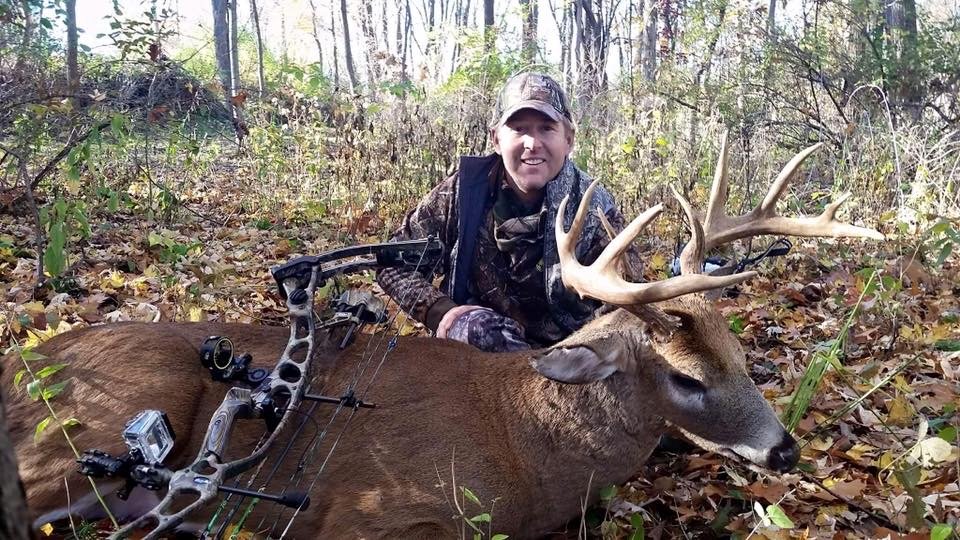The big buck was a dandy with wide sweeping antlers posed against a pristine Great Plains backdrop and the attractive young female hunter sported a smile that truly captured the excitement of her success. Normally, it would have been a slam dunk magazine cover, except for three inches of bloody tongue hanging from the deer’s mouth. The advent of cell phone cameras give every hunter a chance to capture the excitement of the moment and share success with friends and family. Quality photos show respect for the animal as well as your excitement and has never been easier. Keep these tips in mind for a visual memory that others will want to see:
1. Tuck the Tongue- If a child sticks his/her tongue out at a parent it shows disrespect and this feature goes double for hero shots. Make sure the tongue is inside the animal’s mouth and the mouth is closed.

2. Pose naturally- The best hero shots preserve the animal’s dignity and depict the animal as if it is still alive.
3. Get the blood off. Lung shot animals will have blood on the mouth so take a moment and wash it off using drinking water, snow, or paper towels. If it reappears, tuck a small ball of paper in the nostrils to stop the blood flow.
4. Get the antlers or beard in the sky. If possible, move the animal to a place where a picture can be taken at ground level with the antlers clearly visible above the horizon.

5. Unclutter the background- The goal of the photo is to look natural and you don’t want your backpack, lunch bag, or other gear distracting from the image. Also, if you can’t get the antlers above the skyline, position them against a solid backdrop like an orange hunting vest. You want contrast so the rack shows clearly.
6. Skip the truck bed on garage floor. Most cell phone cameras have a flash so photographing the animal can be done in the field, even at night. Sometimes shining a truck or four-wheeler’s headlights on the scene helps, yet it’s important that lighting be as balanced as possible.
7. Shoot in the Shade- Some photographs taken into the sun turn out well, yet most will give you a silhouette and eliminate the detail you want people to see. If possible, move the animal into total shade where there will be no shadows, even under the bill of your hat.
8. Be conscious of red-eye and hat-face. Using a flash may cause the animal (and you) to

have retina reflection. This can be corrected later, but be aware of the problem. Shooting at a different angle or farther away can help. Also, at midday, a hunter wearing a baseball-style hat will have his/her face in total shadow. Raise the bill of the cap, turn it around, or take it off.
9. Open on “three.” We often want an animal posed in direct sunlight for added detail, yet this may cause the hunter to squint when looking into the sun. Have your subject close his/her eyes and open on the count of three. Snap the picture before squinting takes place.
10. Include the whole gang- Most of us hunt in groups and having friends and family in the hero shot helps everyone share in the excitement.

11. Fill flash when possible. Most cell phones don’t have this feature, but SLR’s do and its one of the most useful options, especially in direct sunlight where shadows rob the image of detail. The slight amount of added light can make a huge difference and help separate white antlers from the background.
12. Be natural but not excessive. Hey, you are excited… it’s OK to show it. yet don’t sit on the animal or act in a manner you may regret. Friends may post images that you would not, so don’t get caught using poor judgement.



















![The Best Deer Camp Chili [VIDEO] Deer Chili Ingredients, Tomatoes, Chili Spices](/wp-content/uploads/2015/10/Deer-Chili-Deer-Camp-Recipe-218x150.jpg)
![How to Call Elk Early in the Season [VIDEO]](/wp-content/uploads/2016/08/byers003-218x150.jpg)




![Idiots Disturb Hunter: How Would You Have Handled It? [VIDEO]](/wp-content/uploads/2015/10/DSC00110-e1474487693878-100x70.jpg)
![Albino Buck Shocked to Shed His Antlers [VIDEO]](/wp-content/uploads/2015/10/AlbinoDeer-100x70.jpg)